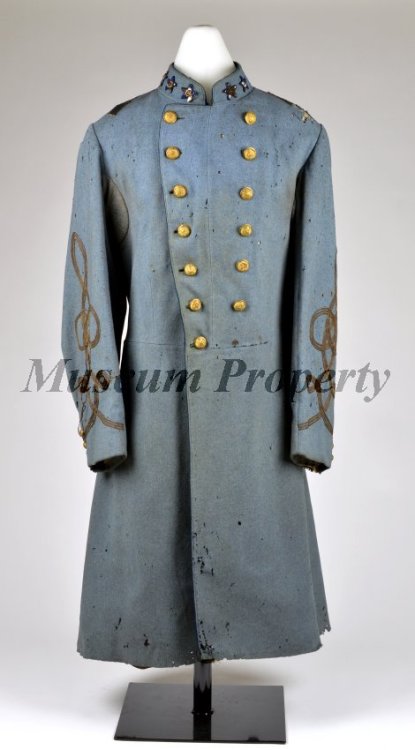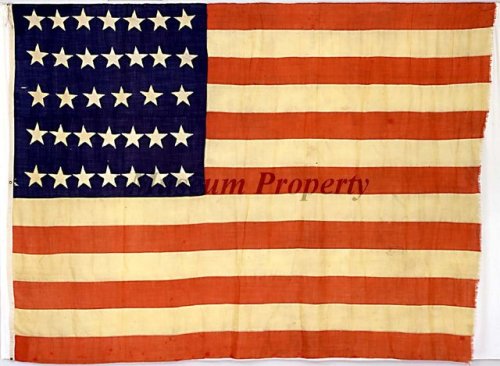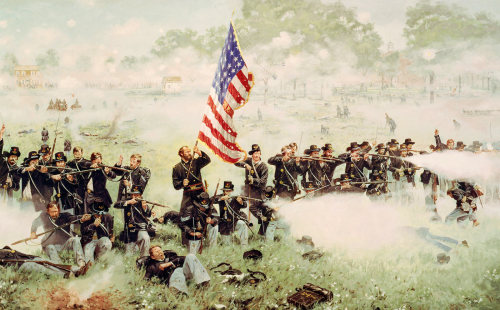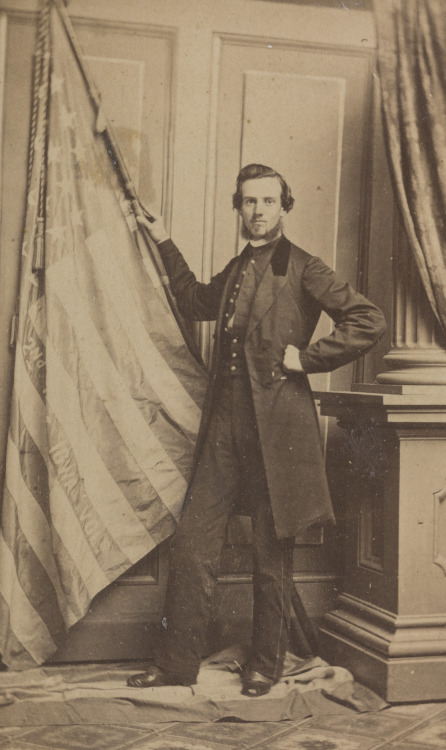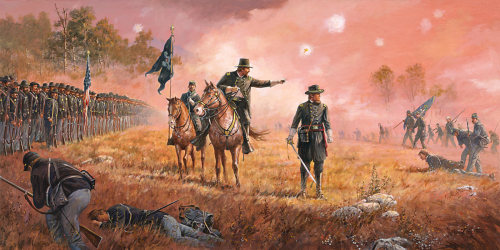#american civil war
I’m really glad this anti-Confederate backlash has picked up steam, because we’ve allowed Confederate apologists to completely seize control of Civil War history. The fact that we even think of it in terms of “North vs. South” or “Union vs. Confederacy” is a sign of that influence. It should be “America’s Slaveowner Revolt.” We ask questions like “what if the South won the war”, as if that was remotely possible given their numbers and logistical failures. The Confederacy was barely a government. Within a year of forming there were riots from food shortages. The whole notion that this was between two equally formidable and legitimate sides is a fallacy of the so-called Lost Cause.
This isn’t griping from a history buff by the way, the Lost Cause has been one of America’s chief guardians of white supremacy for 150 years. The Big Lie about states rights affects politics to this day, and always in the context of letting states curtail civil rights that the federal government has guaranteed. Prior to the Civil War, when Northern states tried to push back against fugitive slave laws and make themselves sanctuaries for runaway slaves, the government cracked down hard on them. There was not a peep about states rights on that. We see it happening today. The states rights scolds have not said a word about Jeff Sessions threatening to destroy cities that refuse to hunt undocumented immigrants. Yet somehow the rights of states become sacrosanct when they want to keep gay couples from adopting kids. All of this is relevant to our current situation, and hopefully taking down some statues of (frankly overrated) treasonous generals is just the beginning.
yooooo
July 3, 1863 - Battle of Gettysburg ends
“On the third day of the Battle of Gettysburg, Confederate General Robert E. Lee’s last attempt at breaking the Union line ends in disastrous failure, bringing the most decisive battle of the American Civil War to an end.
In June 1863, following his masterful victory at the Battle of Chancellorsville, General Lee launched his second invasion of the Union in less than a year. He led his 75,000-man Army of Northern Virginia across the Potomac River, through Maryland, and into Pennsylvania, seeking to win a major battle on Northern soil that would further dispirit the Union war effort and induce Britain or France to intervene on the Confederacy’s behalf. The 90,000-strong Army of the Potomac pursued the Confederates into Maryland, but its commander, General Joseph Hooker, was still stinging from his defeat at Chancellorsville and seemed reluctant to chase Lee further. Meanwhile, the Confederates divided their forces and investigated various targets, such as Harrisburg, the Pennsylvania capital.
On June 28, President Abraham Lincoln replaced Hooker with General George Meade, and Lee learned of the presence of the Army of the Potomac in Maryland. Lee ordered his army to concentrate in the vicinity of the crossroads town of Gettysburg and prepare to meet the Federal army. At the same time, Meade sent ahead part of his force into Pennsylvania but intended to make a stand at Pipe Creek in Maryland.
On July 1, a Confederate division under General Henry Heth marched into Gettysburg hoping to seize supplies but finding instead three brigades of Union cavalry. Thus began the Battle of Gettysburg, and Lee and Meade ordered their massive armies to converge on the impromptu battle site. The Union cavalrymen defiantly held the field against overwhelming numbers until the arrival of Federal reinforcements. Later, the Confederates were reinforced, and by mid-afternoon some 19,000 Federals faced 24,000 Confederates. Lee arrived to the battlefield soon afterward and ordered a general advance that forced the Union line back to Cemetery Hill, just south of the town.
During the night, the rest of Meade’s force arrived, and by the morning Union General Winfield Hancock had formed a strong Union line. On July 2, against the Union left, General James Longstreet led the main Confederate attack, but it was not carried out until about 4 p.m., and the Federals had time to consolidate their positions. Thus began some of the heaviest fighting of the battle, and Union forces retained control of their strategic positions at heavy cost. After three hours, the battle ended, and the total number of dead at Gettysburg stood at 35,000.
On July 3, Lee, having failed on the right and the left, planned an assault on Meade’s center. A 15,000-man strong column under General George Pickett was organized, and Lee ordered a massive bombardment of the Union positions. The 10,000 Federals answered the Confederate artillery onslaught, and for more than an hour the guns raged in the heaviest cannonade of the Civil War. At 3 p.m., Pickett led his force into no-man’s-land and found that Lee’s bombardment had failed. As Pickett’s force attempted to cross the mile distance to Cemetery Ridge, Union artillery blew great holes in their lines. Meanwhile, Yankee infantry flanked the main body of “Pickett’s charge” and began cutting down the Confederates. Only a few hundred Virginians reached the Union line, and within minutes they all were dead, dying, or captured. In less than an hour, more than 7,000 Confederate troops had been killed or wounded.
Both armies, exhausted, held their positions until the night of July 4, when Lee withdrew. The Army of the Potomac was too weak to pursue the Confederates, and Lee led his army out of the North, never to invade it again. The Battle of Gettysburg was the turning point in the Civil War, costing the Union 23,000 killed, wounded, or missing in action. The Confederates suffered some 25,000 casualties. On November 19, 1863, President Lincoln delivered his famous Gettysburg Address during the dedication of a new national cemetery at the site of the Battle of Gettysburg. The Civil War effectively ended with the surrender of General Lee’s Army of Northern Virginia in April 1865.”
This week in History:
June 30, 1859 - Daredevil crosses Niagara Falls on tightrope
July 1, 1867 - Canadian Independence Day
July 2, 1964 - Johnson signs Civil Rights Act
July 3, 1890 - Idaho becomes 43rd state
July 4, 1776 - American colonies declare independence
July 5, 1865 - Salvation Army founded
July 6, 1944 - Major League Baseball’s first All-Star Game is held
Thiscoat, worn by William Dorsey Pender, Sr. during the Battle of Gettysburg, can be found in the collection of the American Civil War Museum.
Post link
April 3, 1865 - Confederate capital of Richmond is captured
“The Rebel capital of Richmond, Virginia, falls to the Union, the most significant sign that the Confederacy is nearing its final days.
For ten months, General Ulysses S. Grant had tried unsuccessfully to infiltrate the city. After Lee made a desperate attack against Fort Stedman along the Union line on March 25, Grant prepared for a major offensive. He struck at Five Forks on April 1, crushing the end of Lee’s line southwest of Petersburg. On April 2, the Yankees struck all along the Petersburg line, and the Confederates collapsed.
On the evening of April 2, the Confederate government fled the city with the army right behind. Now, on the morning of April 3, blue-coated troops entered the capital. Richmond was the holy grail of the Union war effort, the object of four years of campaigning. Tens of thousands of Yankee lives were lost trying to get it, and nearly as many Confederate lives lost trying to defend it.
Now, the Yankees came to take possession of their prize. One resident, Mary Fontaine, wrote, ‘I saw them unfurl a tiny flag, and I sank on my knees, and the bitter, bitter tears came in a torrent.’ Another observer wrote that as the Federals rode in, the city’s black residents were 'completely crazed, they danced and shouted, men hugged each other, and women kissed.’ Among the first forces into the capital were black troopers from the 5th Massachusetts Cavalry, and the next day President Abraham Lincoln visited the city. For the residents of Richmond, these were symbols of a world turned upside down. It was, one reporter noted, '…too awful to remember, if it were possible to be erased, but that cannot be.’”
This week in History:
March 31, 1889 - Eiffel Tower opens
April 1, 1789 - First US House of Representatives elects Speaker
April 2, 1917 - Jeannette Rankin assumes office
April 3, 1860 - Pony Express debuts
April 4, 1968 - Martin Luther King, Jr. assassinated
April 5, 1614 - Pocahontas marries John Rolfe
April 6, 1896 - First modern Olympic Games
Thisflag, reputed to be the first US flag raised over the State Capitol in Richmond by Federal occupation troops after evacuation of the city, can be found in the online collection of the American Civil War Museum.
Post link
October 03, 1862 - The Battle of Corinth
“On this day in 1862, Confederates under General Earl Van Dorn attempt to recapture Corinth, a vital rail center in Mississippi. However, the following day, the Second Battle of Corinth ended in defeat for the Rebels.
Northern Mississippi was the scene of much maneuvering during the summer of 1862. The Confederates were forced to evacuate Corinth in May in the face of heavy Union pressure, but they maintained two armies in the area. On September 19, one of these armies, commanded by Van Dorn, was defeated by Union General William Rosecrans at the Battle of Iuka, 20 miles east of Corinth. Shortly after, Van Dorn combined his force with that of General Sterling Price to form a 22,000-man army that turned toward Corinth to launch another attack against Rosecrans, who had consolidated his forces there.
Van Dorn hurled his army at the outer defenses of Corinth on the morning of October 3. Over the course of the spring and summer, both Union and Confederate occupiers of Corinth had constructed concentric rings of trenches around the city. The Confederates were initially successful at capturing the outer defenses, driving the 23,000 defenders back nearly two miles. The battle lasted all day, and only nightfall brought relief to the battered Yankees.
The next day, the Confederates made a series of desperate assaults on the inner trenches. They suffered heavy losses and began to withdraw from Corinth by early afternoon. The Confederate defeat was devastating. The Union losses included 315 dead, 1,812 wounded, and 232 taken as prisoners, while the Confederate losses included 1,423 dead, 5,692 wounded, and 2,268 prisoners. The Confederate defeat at Corinth allowed the Union to focus attention on capturing Vicksburg, Mississippi, the last major Rebel stronghold on the Mississippi River.”
This week in History:
September 30, 1918 - President Woodrow Wilson speaks in favor of female suffrage
October 1, 1962 - Johnny Carson makes debut as Tonight Show host
October 2, 1836 - Darwin returns to England
October 3, 1863 - Lincoln proclaims official Thanksgiving holiday
October 4, 1777 - Battle of Germantown
October 5, 1947 - First presidential speech on TV
October 6, 1683 - First Mennonites arrive in America
Thiskepi, found on the battleground of the Battle of Corinth, can be found in online collection of the American Civil War Museum.
Post link
Captain Henry “Harry” B. Doolittle of Co. C, 2nd Iowa Infantry Regiment, and Co. K, 20th Iowa Infantry Regiment, who was wounded at Fort Donelson, Tennessee and Corinth, Mississippi, holding 2nd Iowa Infantry regimental flag and standing on first national flag of the Confederacy; Doolittle served as Color Guard in 2nd Iowa Infantry Regiment (x)
Post link

